Three top-tier players discuss the upcoming big event taking place June 24–26 in Columbus.
The 2022
North America VGC International Championships are coming up, along with a
lot of pressure and a lot of questions. It’s the last big event to earn
Championship Points toward an invitation to the World Championships in August,
so players will certainly be bringing their best. Plus, players are dealing
with a rapidly changing metagame—the restricted format that allows two powerful
Legendary Pokémon on a team always leads to fascinating strategies and counter-strategies.
To help prepare for the big event, Chris Shepperd at Pokemon.com chatted with three players who
have all made their mark playing big at big events (all have made it to the Top Cut of the World Championships): Aaron Traylor, Markus Stadter, and Aaron Zheng. Read
on to find out what they think might happen in Columbus, Ohio, where even the
experts will have to wait and see what happens once the matches begin.

Aaron Traylor

Markus Stadter

Aaron Zheng
Remember that you’ll be able to watch all three days of the 2022 North America VGC International Championships on Twitch.tv/Pokemon.
Chris Shepperd: Let’s
open with a simple one: How much has the metagame changed since EUIC? (30
seconds pass.) Maybe this wasn’t so simple!
Traylor: It’s a big question!
Zheng: Ha! There is a lot to talk about for
this one.
Traylor: I think I’ve kind of changed how I think about this question, though,
because there is so much that is possible to use out there.
Stadter: I think going into EUIC (the Europe International Championships), many
people—including myself—thought that the majority of successful teams would
have either Zacian and Groudon, Zacian and Kyogre, or Zacian and Shadow Rider
Calyrex. Now it seems like a LOT more teams are viable. But the meta at EUIC didn’t
consist of only those three [pairings] either.
Traylor: Yeah, like how we put it in our
last [Europe] Internationals preview. But then at EUIC, Indianapolis
Regionals, and Vancouver Regionals, I played only a handful of each of those
teams.
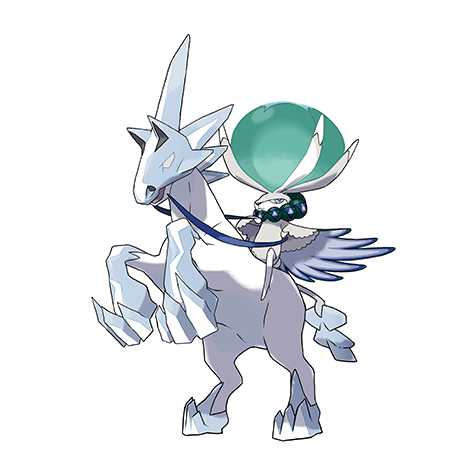
Zheng: I agree with Markus. If you just look
at the Top 8 teams from EUIC, we saw lots of unique duos that didn’t have too
much traction before the event: Ice Rider Calyrex and Reshiram, Lunala and Groudon,
and Dialga and Zacian, just to name a few.
The North America Regionals following EUIC have had lots of
surprising duos perform well. Having played in both New Jersey and Vancouver, it’s
much harder to anticipate what restricted duos you’ll fight against.
Chris Shepperd: Would
you say that the meta is harder to predict right now than in previous years,
then?
Stadter: It’s harder than in previous restricted formats, at least.
Traylor: Definitely harder. Actually, I think it’s like, many players have a
personal preference, and then they workshop that as best they can for the
upcoming tournament.
I’d like to point out Zac Emerzian, who got to Top 8 at Salt
Lake City and then reached the Finals at Vancouver. He ran the same archetype
but updated his team with changes.
Zheng: 2016 was the last restricted format I
played seriously. Back then, almost all of the top teams would use two of these
four: Mega Rayquaza, Primal Groudon, Primal Kyogre, and Xerneas. There weren’t that
many combinations that were really viable, and the more niche duos would often
get weeded out in earlier rounds. In this format, it’s much more open; for
example, I played against Dialga and Kyogre in Round 6 at Vancouver while I was
4-1, which I did not expect.
Stadter: Yeah, I think even with the same six Pokémon, adapting to the expected
metagame is crucial.
For example, Eric Rios and Alex Gomez used the same lineup
at the Bremen Regionals: Incineroar, Rillaboom, Grimmsnarl, Zapdos, Zacian, and
Kyogre. Those exact six have been around for a while now. But they added Rocky
Helmet on Zapdos to beat Shedinja—a Pokémon that got very popular, especially
in the French community. However, this is a trend that is very unique to
France.

Zheng: Similar to Markus’s point, we’ve seen “standard”
teams win tournaments but with very smart meta techs. Chongjun Peng won the
Salt Lake City Regionals using the standard “Rinya Sun” team (which heavily
featured Charizard), but added Charti Berry and Max Rockfall to give him a
significant advantage against opposing Rinya Sun teams. Stefan Mott won the
Indianapolis Regionals with the same six Markus just mentioned, and he had some
smart techs such as bulky Assault Vest Kyogre with Hyper Beam (to beat
Gastrodon), as well as Safety Goggles Eerie Impulse Zapdos to beat Venusaur,
which really started trending in popularity before EUIC.
Stadter: Don’t forget Eric Rios with his Trick Iron Ball Grimmsnarl at EUIC! It’s in
the same category, in my opinion.
Zheng: Yes! Hilariously enough, Trick Iron
Ball was on the original version of that team months ago. It’s interesting to
see that come back in such full force.
Stadter: But everyone thought it was inconsistent. I remember that. It’s the first
thing everyone changed on that team: Light Clay over Iron Ball. And just a few
weeks later we’re back full circle!
Chris Shepperd: So
it seems like there are two things going on: a rather controlled metagame of
Pokémon, but the small tweaks that players are making are having significant
effects on the outcomes.

Traylor: That’s a great way to put it.
Zheng: I think players are either using
standard teams and tweaking them, or trying to counter these standard teams.
Lunala and Groudon, for example, has been quite popular in recent weeks,
partially as a response to Zacian and Kyogre and Zacian and Groudon.
Traylor: Zacian and Groudon has kind of been down on its luck recently, though—that’s
one big change after EUIC.
Chris Shepperd: That
makes sense. The core is really strong, so players are looking at ways to
counter that core as opposed to coming up with a new one?
Stadter: I think having an unpredictable move set can swing a game your way so
quickly in this format. If your techs enable one of your restricted Pokémon or
Dynamax Pokémon to get a cheeky KO, it’s really hard for your opponent to come
back from that.
Trick Iron Ball, Rocky Helmet, Safety Goggles—those items are
very situational. But if the right situation occurs, they have a huge impact on
the game.
Zheng: I’d say
that those two aren’t mutually exclusive—you can counter a popular core by
coming up with a new restricted duo.
Traylor: I think it’s sort of like: OK, this core just won a big tournament. Do I
have to update my existing core to beat it? And if so, how?
Chris Shepperd: It
seems like the one word we heard the most from players over the years is
“consistency.” Does that still apply as much? Do you think players are taking
more risks now?
Stadter: In some ways, I think so, yeah!
Traylor: Ehhh… I feel like there’s a sort of safety to sticking with something you
know. These developments are cool, but I don’t know if I would call them risks.
Stadter: I
think more players are happy to bring something “inconsistent” to tournaments,
or at least something that is not established yet.
Zheng: I think to expand on Markus’s point, there’s
some risk you can take in deviating from a “standard” set. But like Aaron said,
I’m not sure “risk” is the best way to define it. One example I can think of is
Shadow Rider Calyrex. Focus Sash is generally seen as the more “consistent” item,
but we’ve seen some players use Choice Specs with it (such as Carson Confer,
who got Top 8 at Indy Regionals) to catch opponents off guard and deal more
damage.

This speaks more to just the value of
the element of surprise in this format. Players are generally better at the
game than back in the day, so if you can have a surprise that immediately wins
you a game in best-of-three, that has immense value.
Stadter: I think players have, at this point, accepted that it’s impossible to have
a decent match-up into everything, and that opens up the possibility to bring
something a bit unorthodox to an event.
Zheng: For example, I used Choice Scarf
Groudon and Solgaleo at SLC Regionals. On paper, this duo looks relatively
weak, but I found that I won almost every Game 1 I had in the first one or two
turns because no one knew what was coming their way.
Traylor: Well, I don’t know about surprise to be honest. I personally define
“consistent” as, like, you can always execute your strategy. No matter what
your opponent does, they have to deal with it. That’s different from surprise.
I feel like some people are just taking some matchups and executing their strategy
really well in them and then hoping that they don’t play the other matchups, or
realizing immediately that if they play that matchup they are on the back foot.
Stadter: The sweet spot is to have strategies that are both: surprising and consistent.
For example, the Modest Life Orb Regieleki that Traylor and I used at EUIC
falls into that category for me.
Chris Shepperd: Here’s
a semi-related question: Prior to EUIC, there seemed to be clear differences
between the European and North American metagames. Do you think that will
continue at NAIC, or will players make big adjustments based on what happened
in Europe?
Traylor: Really good question.
Zheng: The EU metagame has felt more
centralized as a whole to me.
Stadter: We have Shedinja in Europe, you have Ice Rider Calyrex in North America.
Zheng: Some key differences I noted before
EUIC were: (1) a lot more Venusaur, either paired with Groudon or Torkoal; (2)
a lot more centralization around restricted pairs; and (3) Shedinja Rain, which
is a popular French team that is still doing well.
Stadter: And for a week you had Alcremie!
Traylor: Alcremie got 12th at Vancouver! It’s still around!
Zheng: The North America metagame has really
been blown wide open in recent weeks, IMO. Players are really willing to try
out all kinds of duos, which doesn’t seem to be as prevalent in the EU
Regionals that have taken place since EUIC.
Traylor: I actually think some of the Shedinja contingent may make their way to NAIC,
by the way, especially because Eric Rios and the rest of Europe’s top
Championship Point holders will be there. Worlds probably won’t be the first
time that we see a face-off between American and European players.
Stadter: These regional trends are really cool and something I definitely missed in
the online era.
Zheng: Some examples of somewhat obscure duos
that have gotten Top 8 at North American Regionals events lately: White Kyurem
and Calyrex, Eternatus and Shadow Rider Calyrex, Solgaleo and Shadow Rider
Calyrex, and Reshiram and Ice Rider Calyrex.

Lunala/Groudon also seems to be pretty prevalent in the EU
right now too. Some NA players have used it, but it’s definitely more used
there.
Traylor: I was surprised there was only one in the Top 8 in Vancouver.
Stadter: But the first event it won was in North America.
Zheng: If you look at the Top 8 restricted
pairs from the EU Regionals in the last few weeks, there aren’t any duos that
really make me go, “Wow, this is super surprising.” However, if you look at the
NA Regionals, there are a lot of interesting ones that I would never have predicted
to make it that far.
Chris Shepperd: Let’s
talk restricted Pokémon next. Zacian, Shadow Rider Calyrex, Kyogre, and Groudon
are getting the lion’s share of attention. Should they be viewed as the
favorites at NAIC? If so, which of these will probably rise to the top?
Traylor: At this
point I think it’s really hard to say.
Stadter: They are still the strongest, but other restricted Pokémon are definitely
climbing to the point where it seems like anything can be viable!
Chris Shepperd: It’s
hard to call any of these overrated. But who outside this group is probably not
getting the attention?
Traylor: I wouldn’t be surprised if the Top 8 at NAIC included only those restricted
Pokémon. But at the same time, I wouldn’t be surprised if some lesser-chosen
Legendary Pokémon like Reshiram takes it all.
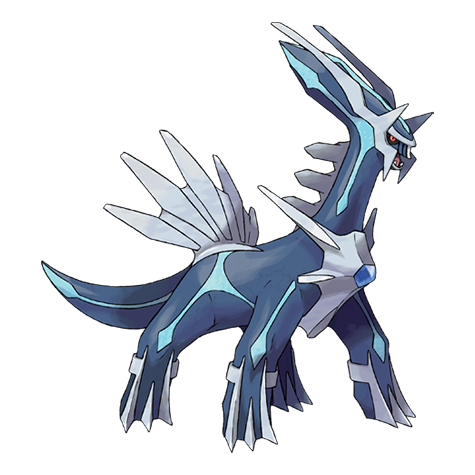
Stadter: Dialga and Yveltal haven’t seen so much usage lately. I think they can both
still be viable.
Traylor: I think if I had to pick, I would say Lunala. It’s so flexible in a way
that lots of the other restricted Pokémon aren’t.
Zheng: Dialga’s a particularly interesting one
for me. Not many top players have really explored it outside of Javier Valdés,
who got Top 8 at EUIC with it and Weezing.
Stadter: The interesting thing about seeing a metagame develop is that it’s not only
important to have a look at what is gaining attention, but also to what is
declining. For example, Rinya Sun was the big contender going into EUIC and
ended up winning the whole event despite everyone trying to be prepared.
Traylor: Like how Zacian and Groudon is kind of MIA after EUIC?
Stadter: Yeah, exactly! But now what happened with it?
Traylor: Yeah, that’s pretty surprising to me, too.
Stadter: It just proved that it could win a big event even with the target it had on
its back…and then it was just gone all of a sudden? It might be a good time
to try it again, now that I think about it…
Zheng: To win an entire tournament, you have
to make it through both the early rounds as well as the later rounds. The
earlier rounds are a lot more variable, especially in this format given how
matchup based it can feel sometimes. For a less popular restricted Pokémon to
win an event, players will have to find a way where it can be either brought
into most battles and provide impact that players aren’t prepared for, or the
rest of the team is built so well around it that it covers for that Pokémon’s weaknesses.
Stadter:For some of the lesser-used restricted Pokémon, I think they need to find
the right supporting Pokémon to shine. Did you see the Shadow Rider Calyrex and
White Kyurem team for example?
Traylor: Nathan Ortiz’s Top 4 team from Vancouver this last weekend?
Stadter: Yes! It made Top Cut in two Regionals if I remember correctly.
Zheng: Yes, I think that’s one of the most
fascinating teams from the recent tournaments.
Traylor: Nathan Ortiz has very quietly made Top Cut in something like four out of
five of the Pokémon Sword and Pokémon Shield Regionals he has
attended, I think.
Stadter: The Sableye, Talonflame, Ditto, and Urshifu on his team are all very
unique.
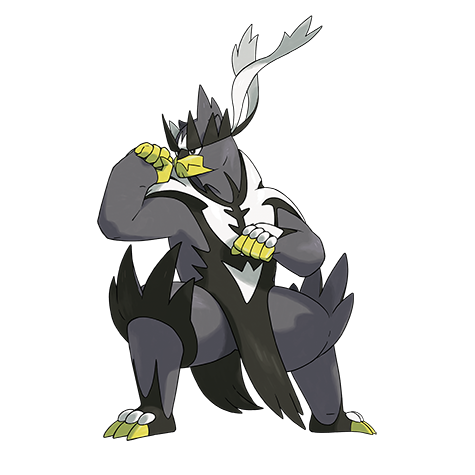
Zheng: It’s so out of left field. And having
tried it out myself, it is insanely hard to execute.
He has definitely Top Cut four
Regionals; not sure how many he has attended. But it’s super impressive—that’s more
Regionals Top Cuts than any other North American player in the Pokémon Sword
and Pokémon Shield era.
Traylor: With an archetype that
people would call “inconsistent.” I think this format has all taught us a lot
about what consistency really is. Ha!
Stadter: When Lunala and Groudon got Top 8 at the Liverpool Regionals, I think
people reacted similarly to it. And look at where it is now in the meta!
Zheng: People are joking “my matchup against
White Kyurem is to simply avoid it.” And in all fairness, there’s some truth
there because White Kyurem is so uncommon.
Stadter: That works most of the time, but now players also have to consider that
team for NAIC.
Traylor: Yeah, it works until it doesn’t. Did you also see what eventually undid him
at Vancouver? Zac [Emerzian] Dynamaxed his Grimmsnarl—which was, I thought, a
super clever solution because the team was weak to Dynamax Grimmsnarl!
Stadter: That was hilarious.
Traylor: I think that’s a really cool angle, and we’ll definitely see some players
pushed to their limits at NAIC.
Stadter: Identifying a win condition like that against such an uncommon team is very
impressive.
Zheng: I think one thing I’ve learnt from
playing at the recent Regionals is you really can’t account for what pairs you’re
going to run into. For example, at the New Jersey Regionals, I didn’t face any
Zacian and Groudon. But in Vancouver I faced three. At NJ, I ran into Yveltal
and Groudon and Shadow Rider Calyrex and Groudon twice in three games, which
was tough for my Lunala and Groudon team to break through.
Chris Shepperd: I
wanted to ask about Grimmsnarl, actually. Among the unrestricted Pokémon, it
seems like control-oriented Pokémon and teams are having a moment. Do you
expect Pokémon like Grimmsnarl and Incineroar to continue to outperform at
NAIC?
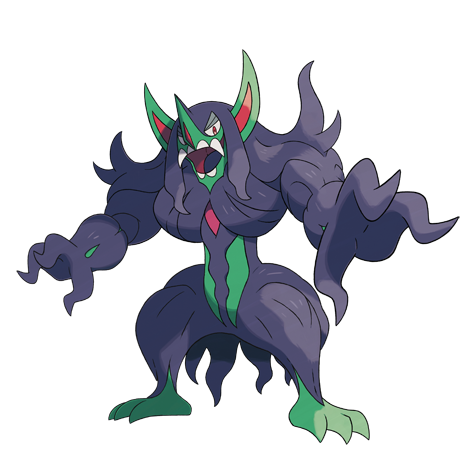
Traylor: Definitely. I feel kind of fighting uphill without them myself.
Zheng: Pokémon
like Grimmsnarl and Incineroar just offer so much utility that they can be
thrown onto pretty much any team with little downside.
Stadter: It’s no surprise that Grimmsnarl Incineroar are on both of what I would call
the biggest teams that came out of this format so far.
Traylor: They also can’t really be “countered.”
Zheng: Grimmsnarl is interesting in
particular. It gets so many good attacks and we’ve seen multiple different sets
do well, with Light Clay/Dual Screens and Trick/Iron Ball being the prevailing
two.
Incineroar has also seen some meta
developments this year, e.g., Max Speed and Focus Sash on the right team.
Traylor: Thanks to its Dark typing, Grimmsnarl can’t be Taunted by faster Prankster
Pokémon, so unless you Fake Out and knock it out in one go, it’s impossible to
prevent it from executing its strategy.
Returning to consistency… It’s also like, do you really
want to focus on Grimmsnarl when there’s a Dynamax restricted Pokémon right
next to it?
Still, I honestly think Grimmsnarl is the best
non-restricted Pokémon.
Stadter: Really? Better than Incineroar?
Traylor: Yeah. Incineroar is useful only some of the time. Grimmsnarl can nearly
always execute its strategy and its typing is better defensively.
Stadter: I think a big part of Incineroar being so good is the fact that Zacian is
on more than 60% of teams. Or at least that’s why Incineroar often feels
necessary.
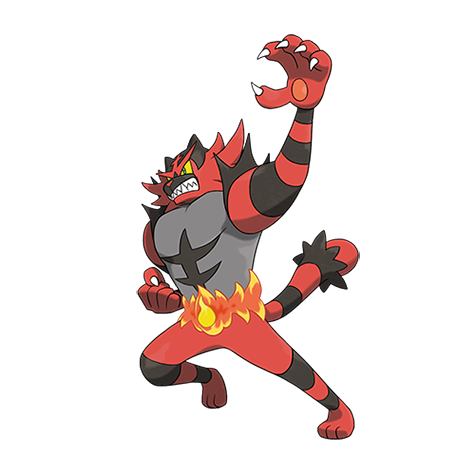
Traylor: That’s why Incineroar feels necessary, but I think that its strength is
externally validated (you need to have it against Zacian) as opposed to
Grimmsnarl just being able to always do what it wants.
Stadter: Not using Zacian allows both restricted Pokémon to Dynamax—as long as you’re
not like Jon Hu and using Eternatus! I think that’s something we might see even
more in the future.
Teams being flexible in what they can Dynamax is a different
approach than using Grimmsnarl, Incineroar, and Zacian together.
Traylor: I want to go back to that Dynamax Grimmsnarl
because I thought it was a great part of that Top 4 set in Vancouver. Zac told
me that he had never Dynamaxed Grimmsnarl before. When you’re facing
elimination against a strong opponent, you need to do what you need to do.
Zheng: I
want to give Aaron some credit here too. In his game 3 at Top 8 at SLC
Regionals, he found a play which was to Dynamax Whimsicott solely to set up
Misty Terrain. I know it’s something he had done in practice before, but it’s still
such an out-of-left-field play to make. And if Aaron didn’t find that
play, I think he would have lost the game. I’m not sure how many players would
recognize that as the right play in the moment, but Aaron did, and that led to
him winning the set.
That stuff separates the best players from the rest.
Traylor: I have a hot take.
Stadter: Please go ahead.
Traylor: If you position your Zacian to win at the end of the game using speed
control and knocking out stuff like Incineroar that can get in its way, you
will always win that game due to its offense and typing. So I don’t know why I
wouldn’t want to use it.

Stadter: Unless there’s a faster Zacian.
Traylor: Sure, but that just means your opponent positioned their Zacian better than
you did with yours.
Zheng: I think the main question is, how do
you get to that game state? It’s easier said than done.
Traylor: Exactly. I think that’s a big part of why bulky teams and Trick Room have
taken off.
Zheng: One of the (only) problems with Zacian
is that it can attack only one Pokémon at a time.
Stadter: I think if you can utilize Intimidate, Parting Shot, Max Wyrmwind, Burn, and
Reflect to limit its damage output, Zacian can be put in check.
Chris Shepperd: Aaron
[Zheng] and Markus, do you agree with Aaron [Traylor]? Is a properly played
Zacian the Pokémon that will win it all? And if so, what’s the other
restricted? We’re putting it all on the line here.
Zheng: I think there’s a reason why it’s still
the number-one restricted pick. It kind of reminds me of Mega Kangaskhan in
2014, though, which dominated for most of the year and then completely fell off
at Worlds because everyone worked so hard to counter it.
Stadter: There are some teams that just don’t let you bring Zacian. If they have Rocky
Helmet Zapdos, Kyogre, and Incineroar, do you really want to rely on Zacian? Or
against Incineroar, Gastrodon, Charizard, and Groudon?
Traylor: If Zacian isn’t Intimidated, it two-hit-KOs each of these Pokémon that you
have just listed.
Stadter: I think Zacian helps a lot to gain consistency, but at the highest level
Zacian doesn’t shine.
Zheng: If I had to pick one duo to win NAIC, it’s
Zacian/Kyogre just because I’d want to bet on what I think will be one of, if
not the most commonly used restricted pair at the event. But quite frankly,
picking a duo to win tournaments in this format is like playing the lottery,
haha. I’m just going to go with what I think will be represented the most.
Traylor: I agree with Aaron.
Chris Shepperd: Something
we see often is that the team that is the most popular often struggles because
it’s so well prepared-for by a minority of teams. Do you think Zacian runs that
risk?
Traylor: Definitely. I would argue that Zacian is already “priced in” to the
metagame, so to speak.
Stadter: I’ll say one of the Calyrex will win NAIC, maybe with a Zacian.
Zheng: Yes, but I think that well-built Zacian
teams will have other modes that are strong. Like Markus mentioned, there are
certain matchups where you don’t even bring Zacian in. But your other Pokémon
are strong enough to cover for that generally.
I’m personally REALLY interested for the metagame once it
comes to Worlds.
Traylor: I am interested to see what players do with two months of time, yeah.
Zheng: I think we’ll see a bit of innovation
for NAIC, but not nearly as much as when people are really trying to win the
event of the year.
Stadter: Incineroar, the Zacian counter, still takes 70% [of its total HP] if it
switches into Sacred Sword.
Traylor: NAIC typically tends to be the “safer” event because players are close to
qualifying for Worlds and they just need a bit more Championship Points to lock
up their invite. But at this year’s event, there are very few people in that
category, so I think people will be willing to risk it all for a shot at the
title.
Stadter: So Zacian cannot be countered as easily. It has to be both—good team
construction and playing well. Just countering Zacian with your team isn’t enough,
and probably isn’t possible.
Traylor: I definitely agree.
Zheng: You also have to keep in mind… Let’s say
you go out of your way to try and beat Zacian. What matchups are you giving up
in order to do that?
Traylor: Exactly. What happens when you don’t fight Zacian?

Stadter: I’ve been trying to find a Pokémon that is good against Zacian and Kyogre
in any situation and it’s just so hard.
Traylor: These Pokémon are so good that you have to structure your whole team around
them if you want to beat them. But then there are a lot of other threats, too.
Chris Shepperd: So
you expect players to be a little more safe with their choices at NAIC, but
then really change it up in London?
Traylor: I think that players will be riskier at Worlds than NAIC, but still riskier
at NAIC than in the past.
Zheng: I agree with Aaron.
Chris Shepperd: That
makes sense. Given the circumstances, quite a few players have already
qualified for Worlds and can take some gambits to win NAIC.
Zheng: It’s a mix though. With the lack of events
this year, I think there are a ton of people who need a Top 64 finish at NAIC
to secure their invite.
Traylor: And you can’t know for sure who you’ll play at a tournament. It’s a very
difficult calculus.
Stadter: Some players will stick to what has worked for them at previous events for
NAIC, IMO.
Zheng: So maybe the Top 50 players, who have
already qualified for worlds, can experiment more since there’s nothing to
lose.
Stadter: They still want to go for that Day 2 invite though!
Zheng: True,
although there are probably very few people in contention for that.
Stadter: At least that’s the situation that I’m in.
Chris Shepperd: Do
you want to fire off any parting shots, hot takes, or predictions before we finish?
Traylor: I think for my final words, I’m going to lock in my Zacian stance from
earlier and say that Zacian will win, and that it will be about the winner
positioning it better than their opponents. The typing, Ability, move pool, and
stats are just beyond what any players will be able to counter, and it’ll be up
to who does it the best.
Stadter: I think we will see a restricted duo we haven’t seen do well so far make
the Top 8 at NAIC.
Zheng: My hot take is that this is,
personally, the most difficult format that I’ve played in.
Traylor: I would back that up.
Zheng: Restricted formats are always hard, but
this one is so much harder because there are so many viable Pokémon and
strategies. For example, I didn’t play much in 2016 but I won a Regionals
simply by using a team that countered the top three team compositions.
However, that’s not nearly as easy in 2022. It’s still clear
that the best players are the best—Eric Rios, like Markus mentioned, has had an
unbelievable run. He has won a Regionals, won EUIC, and just got Top 4 at
another Regionals after going undefeated through Swiss and changing from Rinya
Sun to the rain team. It’s already been historic, and Worlds will be the one to
finish it all off.
Stadter: I’m really looking forward to seeing how Eric Rios will do at NAIC. He
dominated the EU tournaments he attended in a way that we haven’t seen in a
long time in this game.
Traylor: Eric Rios earning two firsts and a fourth in three of the four last EU
tournaments is legitimately unparalleled.
Stadter: No matter what happens to him at NAIC, he will be a favorite going into
Worlds. Whatever team he brings will also Top 8 at NAIC, in my opinion.
Zheng: Agreed. What’s interesting is that he’s
just playing the standard compositions but with his own takes on it. It makes
me wonder if I should do the same…
Traylor: But that was always what I thought was strongest—the top teams don’t have
to be a certain way. If you think through each decision for yourself, you’ll be
able to take an already strong team to a place no one else has before.
Zheng: Definitely. Even with the format being
as hard as it is, the players who have won all the events this year are
exceptionally strong and many would have been considered a favorite going into
the event. It’s
really difficult to be consistent in this format, so I’m even more impressed by
the players who are super consistent.
Many thanks
to Aaron Traylor, Markus Stadter, and Aaron Zheng for their tremendous and
entertaining insights into the upcoming North America International
Championships. Watch the battles commence on Twitch.tv/Pokemon starting June 24,
2022!
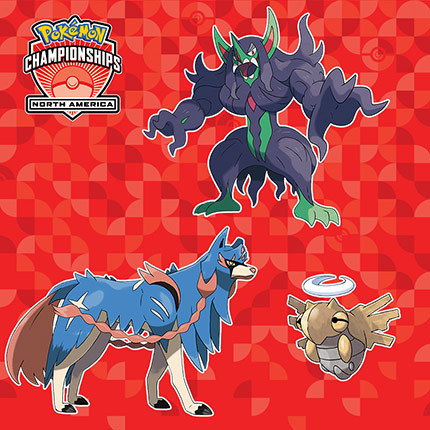
Source: Pokemon

